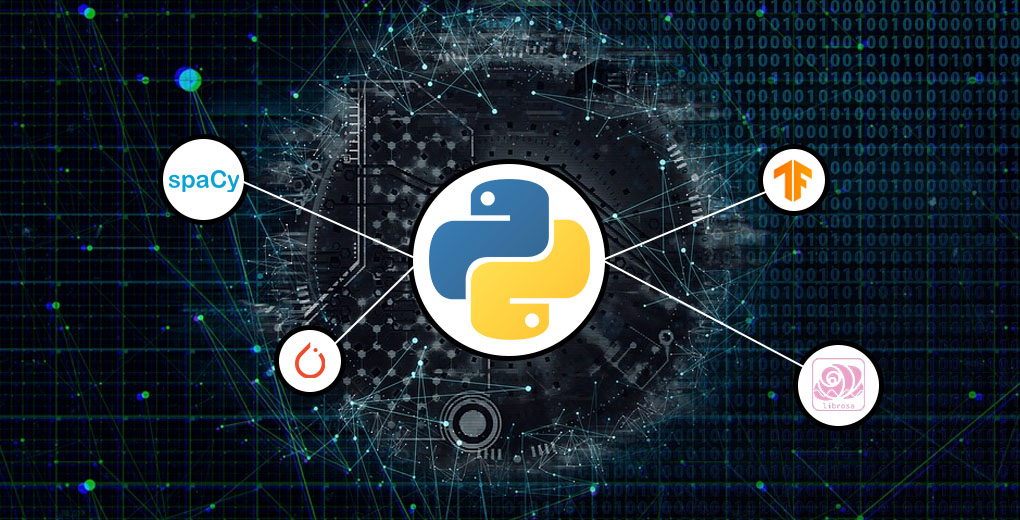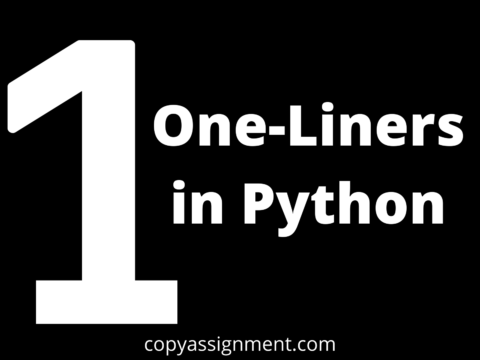
A library is a place where books magazines and other study materials such as videos and audio are available for the public or community to use or borrow. It is a collection of various books of different domains that are said to be known as a library. A python library is a collection of various modules which are related to each other. Libraries in Python contain codes that can be used in various programs. It makes python developers simpler and more convenient for the programmers. As there is no need to memorize or repeatedly write the same code again and again for the different programs. Python Libraries are crucial in various fields of Machine learning, Data Science, Artificial Intelligence, and Data Visualization.
Python Library

As mentioned above, a python library is a collection of modules and codes that can be used in the programs to perform various operations. The main reason for using libraries is we don’t need to write the same code again and again in our program which is already available in the early space. The working of this library is mostly based on the MS Windows environment which consists of library files of Dynamic Load Libraries. Whenever we link a library in our program and run it, the linker will search for the specific library automatically. It retrieves all the necessary functionalities and features to interpret the program accordingly. That’s how we use methods of libraries in our programs.
Python Standard Library

The Python Standard Library consists of syntax semantics and tokens of python. It consists of various built-in modules which are used to provide access to the elements of a program and basic system functionalities like input-output and other modules. Most of the python libraries are written in C programming Language. The Python Standard Library consists of more than 200 core modules these modules work together simultaneously to make python a high-level programming language. Python Standard library plays a vital role it provides programmers to access the functionalities of python. But there are various libraries in python which makes developers’ life even easier.
Numpy

NumPy is the fundamental package for scientific computing in Python. It is a Python library that provides a multidimensional array object, various derived objects (such as masked arrays and matrices), and an assortment of routines for fast operations on arrays, including mathematical, logical, shape manipulation, sorting, selecting, I/O, discrete Fourier transforms basic linear algebra, basic statistical operations, random simulation and much more.
It is imported based on specific syntax like import numpy as np.
Learn more about numpy here.
Pandas

Pandas is a Python package that provides fast, flexible, and expressive data structures designed to make working with structured (tabular, multidimensional, potentially heterogeneous) and time-series data both easy and intuitive. It aims to be the fundamental high-level building block for doing practical, real-world data analysis in Python.
It is imported as import pandas as pd
Matplotlib

Matplotlib is an amazing visualization library in Python for 2D plots of arrays.
Matplotlib is a multi-platform data visualization library built on NumPy arrays and designed to work with the broader SciPy stack.
It is imported as import matplotlib.pyplot as plt
Tensor Flow

This library was developed by Google with Brain Team as a collaboration. It is an open-source library that is used for high-level computations and solving scientific problems. It is used in machine learning and deep learning algorithms. It consists of various tensor operations. Many researchers use this python library to solve complex mathematical and physics problems
SciPy

The name SciPy means Scientific Python. It is used t6o solve high-level computations and is provided for free. This library is built under the extensions of the Numpy library. It works with Numpy in order to handle complex operations and computations. While Numpy is used for sorting and indexing of array data, the numerical data code is stored in Sci Py. This library is widely used by professionals, developers, and programmers.
Scrapy

It is an open-source library that is used for retrieving data from the various websites on the web. It provides very fast web crawling and high-level scrapping. It is used to fetch the necessary amount of data or information to develop websites or applications. It is also used for data mining and automated testing of data.
Scikit-learn

It is one of the most popular libraries in python to work with complex data and operations. Scikit-learn is an open-source library that is provided for free for users that support machine learning. It also supports supervised and unsupervised machine learning algorithms like Linear regression, polynomial regression, clustering, classification, Association, and many more. This library works with the relation with various libraries such as Numpy and SciPy.
PyGame

This library is used to provide an easy interface to the standard library platform-independent graphics like video, audio, animations, and various input libraries. It is used for developing video games using computer graphics and audio libraries along with various programming languages like Python.
Learn more about pygame here.
PyTorch

PyTorch is one of the largest Machine Learning libraries in python which is used to optimize tensor computations. It is very crucial and used to solve mathematical problems and performs various computations. It also has a rich and much-sophisticated API to perform tensor computations with strong GPU acceleration. It also helps to solve the problems which are faced due to neural networks.
PyBrain

The term PyBrain means Python-based Reinforcement Learning, Artificial Intelligence, and Neural Networks library. Reinforcement learning is based on feedback which consists of an agent who performs actions for each action the agent receives reward and if the action is out of bound it doesn’t receive any reward. It is an open-source library that is built for beginners in the field of Machine Learning. It provides fast and easy-to-use algorithms for machine learning tasks. It is so flexible and easily understandable and that’s the reason it is very helpful for developers that are new in research fields.
There are numerous libraries in python. We can use a suitable library based on the requirement. Hence, python libraries play a vital role and they are very much helpful for programmers and developers.
Use of libraries in python Program
As the developers are into the large size of programs in Python, we have to maintain the code-free redundancy and modularity of the code, we split the code into different parts and we can use that code later ever need it. In Python, modules play that part. Instead of using the same code in different programs and making the written code complex, we define mostly the used functions in the modules and we can just simply import them in a required code module of the program wherever there is a requirement. We don’t need to write that code but still, we can use the functionality by importing its module. Multiple interrelated modules are stored in a library. Whenever we need to use a module, we also import it from its library. In python, it’s a very simple job to do due to its easy syntax and semantics. We have to just use import.
Let’s have a look at example code:
# Importing math library
import math
A = 16
print(math.sqrt(A))
Output
4.0
Here in the above code, we imported the math library and used one of its methods i.e. sqrt (square root) without writing the actual code to calculate the square root of a number. That’s how a library makes the programmers’ job easier. But here we needed only the sqrt method of math library, but we imported the whole library. Instead of this, we can also import specific items from a library module.
Importing specific items from a library module
As in the above code, we imported a complete library to use one of its methods. But we could have just imported “sqrt” from the math library. Python allows us to import specific items from a library.
# Importing specific items
from math import sqrt, sin
A = 16
B = 3.14
print(sqrt(A))
print(sin(B))
Output
4.0
0.0015926529164868282
In the above code, we can see that we imported only “sqrt” and “sin” methods from the math library.
Also Read:
- Flower classification using CNN
- Music Recommendation System in Machine Learning
- Stickman Game in Python
- Brick Breaker Game in Python
- Tank game in Python
- GUI Piano in Python
- Ludo Game in Python
- Rock Paper Scissors Game in Python
- Snake and Ladder Game in Python
- Puzzle Game in Python
- Creating Dino Game in Python
- Tic Tac Toe Game in Python
- Tetris game in Python Code
- Top 15 Python Libraries For Data Science in 2022
- Top 15 Python Libraries For Machine Learning in 2022

